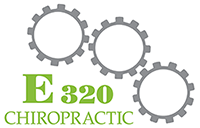SHARE THE LOVE
Let me guess… your child doesn’t just have one speed.
One minute, they’re bouncing off the walls — spinning, shouting, melting down over small frustrations. The next minute? It’s like they’ve disappeared. Zoned out. Can’t focus. Can’t follow instructions. They’re physically in the room… but mentally, somewhere else entirely.
You’ve tried the parenting books. The reward charts. Maybe even the medications. And yet you’re still left wondering:
Why is my child like this? And how do I actually help them?
Looking Past the Label to Find Real Answers
Here’s what most traditional doctors and treatment plans miss: the behaviors we call ADHD or ADD are often just the tip of the iceberg. Underneath those symptoms lies a much deeper story — one that starts in the nervous system.
At E320 Chiropractic, we see two major patterns in kids with these struggles: the “Raging Bull” and the “Drunken Bull.” These aren’t diagnoses — they’re descriptions of how a child’s nervous system is functioning (or not functioning).
And understanding the difference can change everything.
The “Raging Bull” vs. the “Drunken Bull”
The Raging Bull
This is the child stuck in “go-go-go” mode. Constant motion. Loud. Impulsive. Huge emotions that feel impossible to control. They can’t sit still, and they can’t slow down. These are the kids most often diagnosed with hyperactive-type ADHD.
The Drunken Bull
This child may look like the opposite — slow to respond, spacey, disengaged. They may seem “lazy” or “unmotivated,” but the truth is their nervous system is stuck in a fog. This was previously called ADD, now classified as inattentive-type ADHD.
What’s especially important to know? Many kids flip between both of these patterns — sometimes in the same day. A child who once couldn’t stop moving may become shut down from constant frustration. Or an overwhelmed, checked-out child may suddenly burst into high energy or anxiety from built-up stress.
Where Traditional Approaches Fall Short
According to the CDC, around 7 million children in the U.S. have been diagnosed with ADHD. Of those, more than half are prescribed stimulant medications — often as the first line of treatment.
For some kids, these meds bring short-term relief. But for many families, that relief comes with tradeoffs:
- Sleep disruptions
- Appetite suppression
- Anxiety or irritability
- Headaches and stomach issues
- Emotional flatness or “zombie-like” behavior
- Social withdrawal
Even more concerning? These medications don’t actually address the root cause — they only try to manage the symptoms. Meanwhile, the nervous system remains stuck in stress mode.
And so the cycle continues: more symptoms, more meds, more side effects… with little to no long-term progress.
Understanding What’s Really Going On in the Brain + Nervous System
Behind both ADHD patterns lies a combination of neurological stress and imbalance that impacts a child’s ability to regulate their emotions, behaviors, and focus.
Here’s what we most often see in kids with these struggles:
- Subluxation & Sympathetic Dominance
Tension, misalignment, and restricted motion in the neurospinal system — especially the brainstem — disrupt the communication between brain and body. This kind of interference often begins with birth trauma or early injuries and pushes the nervous system into a constant state of fight-or-flight. - Nervous System Dysregulation (Dysautonomia)
When subluxation lingers, it throws off the body’s ability to self-regulate. Kids become stuck in “stress mode,” unable to switch into calm, connected, and focused states. - Vagus Nerve Dysfunction
This nerve is key to shifting out of fight-or-flight and into parasympathetic regulation — the part of the nervous system responsible for rest, digestion, focus, and healing. When the vagus nerve isn’t functioning well, kids struggle with emotional regulation, focus, and sleep.
Your Child Isn’t Broken — They’re Wired Differently
What if the real issue isn’t attention, behavior, or discipline? What if your child’s brain and body are simply trying to adapt to a system that’s out of balance?
That’s where Neurologically-Focused Chiropractic Care comes in.
At E320 Chiropractic, we use specialized INSiGHT Scans to get a clear picture of how your child’s nervous system is functioning. We’re not guessing. We’re not masking symptoms. We’re identifying where the stress and dysfunction are happening — and creating a custom plan to help restore balance naturally, without drugs or side effects.
From Struggle to Superpower
So many parents come to us saying: “We’ve tried everything.” But the truth is, most ADHD support stops at the surface. Labels. Behavior charts. Medication.
What your child needs is a plan that looks deeper — at the actual cause of their challenges — and helps their body regulate from the inside out.
When we support the nervous system:
- Focus improves
- Meltdowns decrease
- Sleep becomes easier
- Emotional resilience increases
And most importantly? Your child’s unique brain becomes their greatest strength — not their biggest challenge.
The Next Step Starts Here
If you’re exhausted from trial-and-error… if you’re ready to stop chasing symptoms and start finding real answers — we’re here for you.
At E320 Chiropractic, we take the time to uncover what’s really going on in your child’s nervous system, and we create a plan that helps them heal naturally, safely, and effectively.
Call us today at 864-367-6766 to schedule your child’s INSiGHT Scan.
Because once you know which kind of “bull” is charging through your child’s brain, you can finally find the right way to calm it — and help your child thrive.
